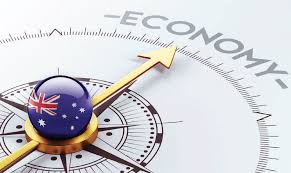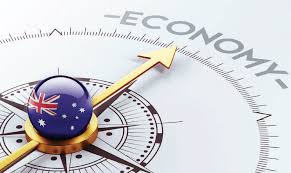
Australia's economy, which has not seen a recession in the last 27 years, has long aroused curiosity for economists and academicians throughout the world as there are some folklore that has been built up surrounding this long stretch of good performance.
Researchers claim that the Australian economy has indeed seen waxing and waning of expansion even in that period of 27 years. Back in November last year, United States Federal Reserve Chairman Jerome Powell made a proposition jokingly about business cycles being defunct or nonexistent in Australia, the reality is different.
Business cycles are on the down turn currently. And that is a good thing for the Australian economy because it would then be viewed to be a normal one which is also vulnerable to ups and downs. This would then allow policy makers to implement standard policy prescriptions. For example, there has virtually been no change in the monetary policy down under for over two years now.
May believed that during his seven-year tenure as the Governor of the Reserve Bank of Australia, Philip Lowe would not have to move interest rates up or down. Many also believed however the rates would have to be moved up at some point in time in the near future. But it was not until recently that a few brave economists and analysts predicted that there could be a downgrading in the borrowing costs in the country.
However, in his typical and thoughtful speech, that complacency was shaken by Lowe this week. He indicated on the possibility of the central bank taking a stance of increasing of rates and hinted at shifting to neutral which means that the bank could be as real a possibility as a hike in rates. The chances therefore of a reduction in rate are a possibility because Lowe had also climbed down from a predisposition to hike.
"If Australians are finding jobs and their wages are rising more quickly, it is reasonable to expect that inflation will rise and that it will be appropriate to lift the cash rate at some point. On the other hand… it is possible that the economy is softer than we expect, and that income and consumption growth disappoint. In the event of a sustained increase in the unemployment rate and a lack of further progress towards the inflation objective, lower interest rates might be appropriate at some point," he gad said
This change of course has been attributed to poor household spending which is correlated to a drop in housing prices, and low inflation rates even with a fairly strong labor market. Very low and stagnant inflation rate is something that central bankers have attempted to address for years now.
The myth surrounding the Australian economy is derived from the absence of two consecutive fall in gross domestic product between the period 2001 and 2008-09 which was propelled by a number of factors including the robust growth of China. Further, the past and present politicians of the country and a handful of business leaders also contributed to creating the image abroad about the economy.
Therefore many economists feel that the manner in which the Australian economy is viewed by the outside world needs to undergo a change and it needs to be stressed that the economy is not a figment of nature and is not insulated from global currents and domestic upheavals that can dent the image of the Australian economy.
(Source:www.smh.com.au)
Researchers claim that the Australian economy has indeed seen waxing and waning of expansion even in that period of 27 years. Back in November last year, United States Federal Reserve Chairman Jerome Powell made a proposition jokingly about business cycles being defunct or nonexistent in Australia, the reality is different.
Business cycles are on the down turn currently. And that is a good thing for the Australian economy because it would then be viewed to be a normal one which is also vulnerable to ups and downs. This would then allow policy makers to implement standard policy prescriptions. For example, there has virtually been no change in the monetary policy down under for over two years now.
May believed that during his seven-year tenure as the Governor of the Reserve Bank of Australia, Philip Lowe would not have to move interest rates up or down. Many also believed however the rates would have to be moved up at some point in time in the near future. But it was not until recently that a few brave economists and analysts predicted that there could be a downgrading in the borrowing costs in the country.
However, in his typical and thoughtful speech, that complacency was shaken by Lowe this week. He indicated on the possibility of the central bank taking a stance of increasing of rates and hinted at shifting to neutral which means that the bank could be as real a possibility as a hike in rates. The chances therefore of a reduction in rate are a possibility because Lowe had also climbed down from a predisposition to hike.
"If Australians are finding jobs and their wages are rising more quickly, it is reasonable to expect that inflation will rise and that it will be appropriate to lift the cash rate at some point. On the other hand… it is possible that the economy is softer than we expect, and that income and consumption growth disappoint. In the event of a sustained increase in the unemployment rate and a lack of further progress towards the inflation objective, lower interest rates might be appropriate at some point," he gad said
This change of course has been attributed to poor household spending which is correlated to a drop in housing prices, and low inflation rates even with a fairly strong labor market. Very low and stagnant inflation rate is something that central bankers have attempted to address for years now.
The myth surrounding the Australian economy is derived from the absence of two consecutive fall in gross domestic product between the period 2001 and 2008-09 which was propelled by a number of factors including the robust growth of China. Further, the past and present politicians of the country and a handful of business leaders also contributed to creating the image abroad about the economy.
Therefore many economists feel that the manner in which the Australian economy is viewed by the outside world needs to undergo a change and it needs to be stressed that the economy is not a figment of nature and is not insulated from global currents and domestic upheavals that can dent the image of the Australian economy.
(Source:www.smh.com.au)





